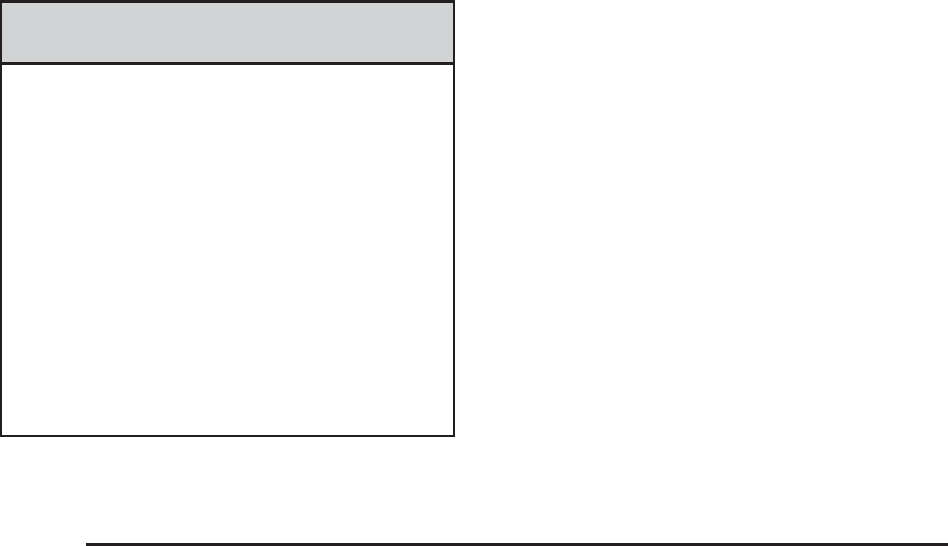
PARK (P): This position locks your front wheels.
It is the best position to use when you start your
engine because your vehicle cannot move easily.
{CAUTION:
It is dangerous to get out of your vehicle
if the shift lever is not fully in PARK (P)
with the parking brake firmly set. Your
vehicle can roll.
Do not leave your vehicle when the engine
is running unless you have to. If you have
left the engine running, the vehicle can
move suddenly. You or others could be
injured. To be sure your vehicle will not
move, even when you are on fairly level
ground, always set your parking brake
and move the shift lever to PARK (P).
See Shifting Into Park (P) (Automatic
Transaxle) on page 118.
Ensure that the shift lever is fully in PARK (P)
before starting the engine. Your vehicle has
an automatic transaxle shift lock control system.
You have to apply your regular brakes before you
can shift from PARK (P) when the key is in ON. If
you cannot shift out of PARK (P) while holding the
brake pedal down, see Shifting Out of Park (P) on
page 119.
REVERSE (R): Use this gear to back up.
When shifting from NEUTRAL (N) to
REVERSE (R), you need to apply the regular
brake and push the release button on the front of
the shifter and then forward.
Notice: Shifting to REVERSE (R) while your
vehicle is moving forward could damage the
transaxle. The repairs would not be covered by
your warranty. Shift to REVERSE (R) only after
your vehicle is stopped.
To rock your vehicle back and forth to get out of
snow, ice or sand without damaging your transaxle,
see If Your Vehicle is Stuck in Sand, Mud, Ice, or
Snow on page 247.
NEUTRAL (N): In this position, your engine does
not connect with the wheels. To restart while
you are already moving, use NEUTRAL (N) only.
Also, use NEUTRAL (N) when your vehicle is
being towed.
112


















